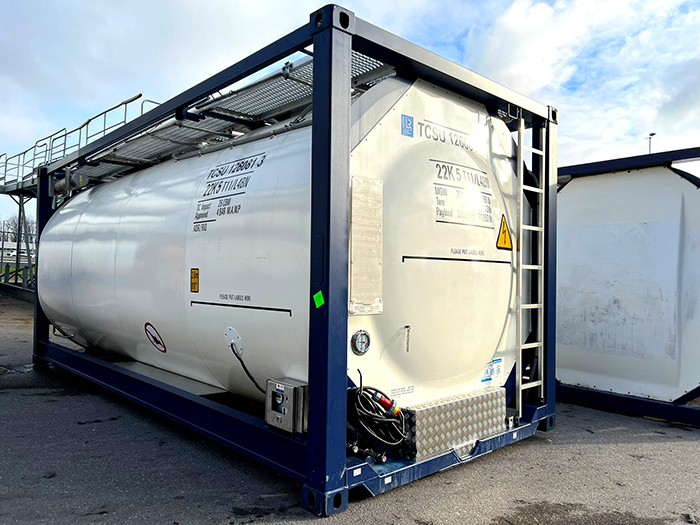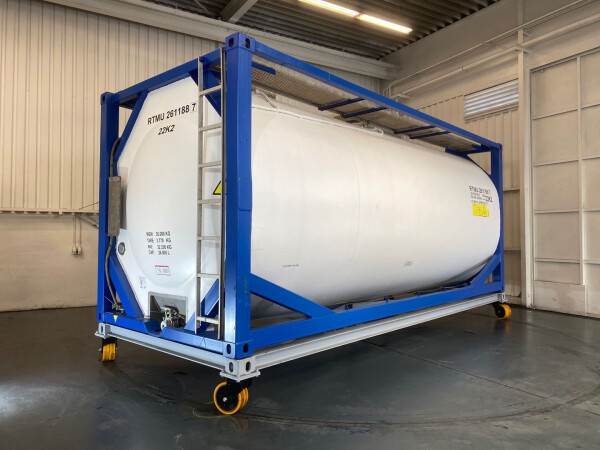In the global logistics and transportation industry, efficiency, safety, and versatility are paramount. Among the myriad solutions available, Industrial ISO Tanks Containers have emerged as a game-changer—offering a reliable and cost-effective way to transport liquids and gases across borders and continents. This comprehensive guide delves into everything you need to know about ISO tanks, their features, applications, benefits, and how they are transforming the landscape of bulk liquid transportation.
1. Introduction to Industrial ISO Tanks Containers
The transportation of liquids, gases, and chemicals requires specialized equipment that ensures safety, efficiency, and compliance with international standards. Industrial ISO tanks containers are standardized, high-capacity tanks designed for the bulk transportation of liquids across different modes of transport—sea, rail, road, and air.
These containers have revolutionized the way industries handle hazardous and non-hazardous liquids, offering an integrated solution that adheres to global standards such as ISO 9001, ISO 22000, and others. Their modular design simplifies logistics, reduces costs, and enhances safety, making them indispensable in modern supply chains.
2. What Are ISO Tanks? An Overview
ISO tanks, or ISO tank containers, are large-volume liquid tanks built to specific standards established by the International Organization for Standardization (ISO). They are mounted on chassis frames, allowing them to be easily transported using standard freight equipment like trucks, ships, and trains.
Key features of ISO tanks include:
- Capacity ranging from 6,000 to 26,000 liters (approximately 1,585 to 6,865 gallons)
- Modular design for easy handling and stacking
- Compatibility with multiple transport modes
- Compliance with international safety and quality standards
3. History and Evolution of ISO Tanks
The concept of standardized tanks for liquid transportation dates back to the mid-20th century, driven by the need for efficient cross-border liquid trade. Initially, drums and barrels dominated, but these were inefficient for large volumes.
The advent of ISO tank containers in the 1960s and 1970s marked a significant milestone, allowing seamless intermodal transportation. Over the decades, technological advancements have improved insulation, corrosion resistance, and safety features, making ISO tanks a preferred choice globally.
4. Construction and Design of ISO Tanks
Materials Used
ISO tanks are primarily constructed using stainless steel (generally 304 or 316 grades) due to its corrosion resistance, durability, and suitability for sanitary applications. Some tanks also incorporate specialized linings or coatings for specific chemical compatibilities.
Types of ISO Tanks
- Cryogenic ISO Tanks: Designed for liquefied gases at very low temperatures (e.g., LNG).
- Pressurized ISO Tanks: Built to contain gases or liquids under pressure.
- Open-Top ISO Tanks: Equipped with a removable top for easy filling and cleaning, suitable for bulk powders or solids.
- Insulated ISO Tanks: Feature thermal insulation for temperature-sensitive liquids.
Key Features and Specifications
- Frame: Standardized chassis compliant with ISO standards for easy stacking and handling.
- Vents and Safety Devices: Pressure relief valves, safety vents to prevent over-pressurization.
- Valves and Fittings: Designed for leak-proof operation and ease of cleaning.
- Insulation: Some tanks incorporate insulation layers for temperature control.
- Accessibility: Manholes and cleaning ports for maintenance.
5. Applications of ISO Tanks Containers
Chemical Industry
ISO tanks are extensively used to transport chemicals such as acids, alkalis, solvents, and other hazardous liquids. Their design ensures containment and safety during transit.
Food and Beverage Sector
Food-grade ISO tanks are used for transporting edible oils, wine, juices, and other perishable liquids, adhering to strict sanitary standards.
Petroleum and Oil Industry
Refined petroleum products, lubricants, and other hydrocarbons are shipped in specialized ISO tanks designed for chemical compatibility and safety.
Pharmaceutical and Medical Fields
Sterile and temperature-sensitive liquids such as pharmaceuticals and biotech products are transported using specially coated and insulated ISO tanks.
Other Industrial Uses
ISO tanks also cater to industries like agriculture (fertilizers, agrochemicals), wastewater management, and more.
6. Advantages of Using ISO Tanks Containers
Cost-Effectiveness
- Reduced packaging costs due to bulk transport.
- Lower handling costs and minimized spillage risks.
- Intermodal capabilities allow seamless transfer between transport modes without unloading.
Safety and Security
- Built-in safety features prevent leaks and accidents.
- Designed to withstand extreme conditions.
- Compliance with international safety standards.
Environmental Benefits
- Reduced carbon footprint through efficient transport.
- Minimized spillage and waste.
- Reusability of tanks supports sustainability.
Flexibility and Mobility
- Easily moved across different transport modes.
- Suitable for various liquids and gases.
- Reusable and adaptable for different cargos.
7. ISO Tank Standards and Certifications
ISO tanks must meet a plethora of international standards to ensure safety, quality, and compatibility:
- ISO 1496-3: Specifies dimensions, testing, and performance requirements.
- ISO 9001: Quality management systems.
- ISO 22000: Food safety management (for food-grade tanks).
- ADR/RID: Regulations for transport of dangerous goods.
- IMDG Code: International Maritime Dangerous Goods Code.
Compliance ensures legal transport across borders and adherence to safety protocols.
8. Choosing the Right ISO Tank Container
Factors to Consider
- Type of Liquid or Gas: Chemical compatibility, temperature, pressure.
- Capacity Needs: Based on volume requirements.
- Transport Mode: Sea, rail, road, or multimodal.
- Sanitary Requirements: Food-grade or pharmaceutical-grade tanks.
- Duration of Use: Short-term leasing or long-term ownership.
- Regulatory Compliance: International standards applicable.
Leasing vs. Buying
Many companies opt for leasing ISO tanks for flexibility and lower upfront costs, while others prefer ownership for long-term projects. Reputable suppliers like EquipIntermodal provide leasing options with maintenance and inspection services.
9. Maintenance and Inspection of ISO Tanks
Regular inspection and maintenance are vital for safety and longevity:
- Routine Checks: Visual inspection for corrosion, leaks, or damages.
- Cleaning: Especially for food and pharmaceutical tanks.
- Pressure Testing: Ensures integrity under operational conditions.
- Certification Renewal: Compliance with regulatory requirements.
Partnering with experienced suppliers ensures tanks are inspected and maintained per industry standards.
10. Leading Manufacturers and Suppliers
The market hosts several reputable manufacturers specializing in ISO tanks, including Equip Intermodal, which is renowned for high-quality, compliant tank solutions tailored to diverse industry needs. Their offerings include:
- Chemical ISO Tanks
- Food-Grade ISO Tanks
- Cryogenic ISO Tanks
- Customizable Solutions
Choosing a reliable supplier ensures safety, compliance, and operational efficiency.
11. Future Trends in ISO Tank Technology
The landscape of ISO tanks is evolving with innovations aimed at sustainability, safety, and efficiency:
- Smart Tanks: Incorporating IoT sensors for real-time monitoring of pressure, temperature, and fluid levels.
- Enhanced Insulation: Better thermal management for temperature-sensitive cargos.
- Eco-Friendly Materials: Developing tanks with recyclable and environmentally friendly components.
- Automation: Streamlining cleaning, filling, and maintenance processes.
These advancements promise to make ISO tanks even more versatile and sustainable.
12. Conclusion: Why ISO Tanks Are the Future of Bulk Liquid Transportation
As industries continue to expand globally, the demand for efficient, safe, and versatile liquid transportation solutions grows. Industrial ISO tanks containers offer an ideal answer—standardized, reliable, and adaptable to various industries and cargos.
From chemical and food industries to pharmaceuticals and energy sectors, ISO tanks facilitate seamless intermodal transportation, reduce costs, and enhance safety standards. Partnering with experienced manufacturers like EquipIntermodal ensures access to high-quality solutions tailored to specific needs.
In embracing ISO tank technology, businesses position themselves at the forefront of innovation, sustainability, and operational excellence—ready to meet the challenges of tomorrow’s logistics landscape.
Ready to Optimize Your Liquid Transportation?
If you’re looking to enhance your logistics operations with reliable ISO tanks, explore options with Equip Intermodal—a trusted leader in the industry. Visit Equip Intermodal for more information on their product offerings, leasing solutions, and expert support.



